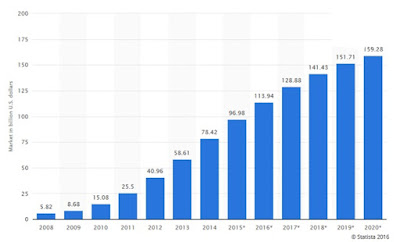Twitter Feed
Cloud Computing as a Strategic Asset
For some reason, this week seems to have more in it than most. While the steady stream of briefing request seem to be increasing, the post briefing discussions also seem…
Vivek Kundra: “Engage the American People in their Daily Digital Lives”
Today I attended a very impressive talk by the Federal CIO, Mr. Vivek Kundra at a Northern Virginia Technology Council Public Policy event. His open and “matter of fact” approach…
McKinsey vs. Booz Allen Hamilton !
A community skirmish reminiscent of the recent “manifestogate” has apparently erupted around the McKinsey & Co. report “Clearing the air on cloud computing“. Booz Allen Hamilton Principals Mike Cameron and…
Oracle Buys Sun!!
Swooping in from nowhere, Oracle buys Sun for $7.4B!! “This morning, the companies announced that they’d struck a deal worth $7.4 billion or $5.6 billion net of Sun’s cash and…
Aneesh Chopra Nominated For Federal CTO
Although Aneesh Chopra is a new name for most, he is well know in Virginia as Governor Tim Kaine’s Secretary of Technology. For the Commonwealth, he was charged with leading…
Could Cloud Computing Cost More?
In a recent conference, analyst William Forrest says that large companies could end up paying more than twice as much by using cloud based services. According to a Forbes.com report,…
Cisco’s Cloud Computing Strategy
A couple of weeks ago, Krishna Sankar provided a glimpse into Cisco’s cloud computing strategy in a presentation titled “A Hitchhiker’s Guide to the Inter-Cloud” . The presentation outlined the…
NCOIC and Cloud Computing: An Update
As the NCOIC gets it’s arms around this new paradigm, the Cloud Computing Working Group has focused on establishing a roadmap for providing value to the industry. Using the established…
SUN-IBM Talks Breakdown
As reported in multiple sources today, including Reuters, Sun has apparently rejected a purchase offer by IBM. “Shares of Sun Microsystems Inc tumbled 22.5 percent after it rejected a $7…
Former DoT CIO on Cloud Computing
Last month, former Transportation Department CIO Dan Mintz offered his views on cloud computing to Eric Chabrow, Managing Editor of Government Information Security. According to Mr. Mintz, there is currently…
- Enable cloud service arbitrage based on cost, performance or operational need;
- Help companies migrate operations to the cloud and assist with staff augmentation and training;
- Provide cloud service auditing and SLA monitoring services;
- Help in focusing and managing organizational cloud service demand;
- Provided toolsets to assist in the migration and integration of enterprise applications; and
- Help in change management and the selection and integration of other managed services.
By automating and operationalizing the governance of cloud services, CSBs can efficiently multi-source services and augment them with third party metering and monitoring. Using CSBs, organizations also accelerate their transition to hybrid IT models. This marketplace is typically segmented type of services: cloud brokerage and cloud brokerage enablement, wherein cloud brokerage enablement is further segmented into internal and external brokers. When used internally, cloud enablement platforms helps enterprises adopt the new hybrid IT and multi-sourced operating model. By building organic expertise, companies can personalize IT service consumption and unify
IT service delivery through the use of a corporate self-service store, a dynamic service marketplace, and continuous delivery. This centralized, supply chain approach unifies the order, execution, and management of multi-sourced solutions across legacy and cloud resources, by centrally delegating and tracking execution.
(This post was brought to you by IBM Global Technology Services. For more content like this, visit Point B and Beyond.)
( Thank you. If you enjoyed this article, get free updates by email or RSS – © Copyright Kevin L. Jackson 2016)
Cloud Computing
- CPUcoin Expands CPU/GPU Power Sharing with Cudo Ventures Enterprise Network Partnership
- CPUcoin Expands CPU/GPU Power Sharing with Cudo Ventures Enterprise Network Partnership
- Route1 Announces Q2 2019 Financial Results
- CPUcoin Expands CPU/GPU Power Sharing with Cudo Ventures Enterprise Network Partnership
- ChannelAdvisor to Present at the D.A. Davidson 18th Annual Technology Conference
Cybersecurity
- Route1 Announces Q2 2019 Financial Results
- FIRST US BANCSHARES, INC. DECLARES CASH DIVIDEND
- Business Continuity Management Planning Solution Market is Expected to Grow ~ US$ 1.6 Bn by the end of 2029 - PMR
- Atos delivers Quantum-Learning-as-a-Service to Xofia to enable artificial intelligence solutions
- New Ares IoT Botnet discovered on Android OS based Set-Top Boxes



